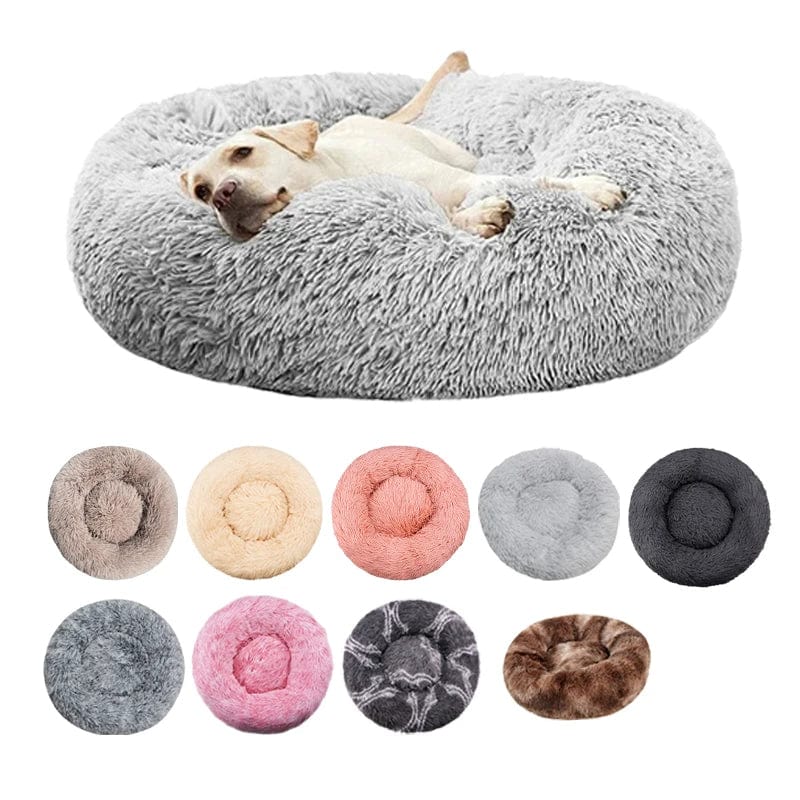Frequently Asked Questions
1. Why do dogs need toys?
2. How do toys help with a dog's emotional needs?
3. What factors should I consider when choosing dog toys?
4. How can I prevent my dog from getting bored with their toys?
5. Can toys be used for training my dog?
Dogs are not just pets; they are family members, companions, and confidants. Just like us, they have emotional and behavioral needs that must be met to live a happy and fulfilling life. One of the most effective ways to ensure your canine friend remains emotionally balanced and well-behaved is by providing them with suitable toys. In this article, we'll explore the essential reasons why dogs need toys and how these items play a crucial role in their overall well-being.
The Emotional Needs of Dogs
Dogs are inherently social beings, and just as humans do, they experience a full range of emotions. Understanding these emotional needs is vital for pet owners who wish to ensure that their furry friends thrive. Here are some emotional needs that toys can help fulfill:
1. Playfulness and Happiness
Toys encourage play, which is a natural behavior for dogs. Engaging in playtime promotes happiness and helps reduce anxiety and stress. Having a range of toys available allows dogs to choose what they want to play with, fostering independence and self-expression.
2. Social Interaction
Toys can also facilitate social interactions, both with humans and other dogs. When playing tug-of-war or fetch, dogs can engage with their owners, bridging emotional gaps and enhancing their bond. In group play settings, toys can provide stimulation that encourages healthy social engagement among dogs.
3. Mental Stimulation
Just like physical exercise, mental stimulation is crucial for a dog's well-being. Interactive toys, puzzle feeders, and treat-dispensing toys challenge a dog’s mind, keeping them sharp and preventing boredom. Boredom can lead to destructive behaviors, so it’s essential to engage your pet's intellect.
The Behavioral Needs of Dogs
Behavioral problems in dogs can usually be traced back to unmet needs. Toys can address many of these issues effectively. Here are some behavioral aspects that should be considered:
1. Channeling Energy
Dogs have varying energy levels, and a well-exercised dog is happier and better behaved. Providing toys, especially those designed for chewing, chasing, or retrieving, allows dogs to channel their energy appropriately. This can help reduce excessive barking, unwanted chewing, or other problematic behaviors.
2. Reducing Anxiety
Many dogs experience anxiety, especially in unfamiliar situations or when left alone. Toys can serve as a source of comfort, providing an outlet for their stress and helping them to feel secure. Plush toys or even a dog’s favorite chew can act as a reassuring presence during challenging times.
3. Encouraging Healthy Habits
Ongoing interaction with toys can instill healthy habits in dogs. Regular playtime can help develop strength, coordination, and agility. Additionally, chewing on appropriate toys can promote oral health, preventing dental issues that emerge when dogs chew on inappropriate items.
Choosing the Right Toys
With various dog toys on the market, choosing the right one for your pooch can be daunting. Here are some factors to consider when selecting toys:
1. Size and Durability
Always choose toys that are appropriate for your dog's size. A toy that is too small can pose a choking hazard, while a toy that is too large may not be easily handled. Also, consider your dog’s chewing style. If they are an aggressive chewer, you’ll want to opt for more durable toys that can withstand their strength.
2. Type of Play
Different dogs enjoy different types of play—some prefer puzzles that challenge their minds, while others thrive on physical play. Understanding your dog’s preferences can guide your choices, ensuring you select toys that will keep them engaged and happy.
3. Safety First
Safety should always be a priority. Opt for toys made from non-toxic materials, and regularly inspect them for wear and tear. A damaged toy can pose a risk to your dog if ingested. Always prioritize their safety when choosing toys.
The Importance of Variety
Just as dogs have varying preferences, they also enjoy variety in their play. Rotating toys, introducing new items, or even switching up the types of toys can keep your dog physically and mentally stimulated.
1. Preventing Boredom
Boredom often leads to behavioral problems in dogs. By providing a diverse range of toys, you can prevent your pet from losing interest and encourage them to engage in positive play. Introducing a new toy occasionally sparks excitement and motivation to play.
2. Encouraging Exploration
Different types of toys can encourage dogs to explore their environment, promoting physical activity and curiosity. A plush toy might entice gentle play, while a ball might beckon a game of fetch in the yard, creating a diverse play schedule that keeps them active and engaged.
Seasonal Considerations and Toys
As seasons change, so do the types of toys that may be best suited for your dog. For example, winter may call for toys that encourage active play indoors, whereas summertime may be ideal for outdoor fetch toys. Making seasonal adjustments can help you maintain your pet’s interest and cater to their emotional needs across various climates.
1. Winter Fun
During colder months, it can be beneficial to have indoor toys. Soft chew toys or interactive puzzles can help keep your dog occupied when outdoor activities may be limited. You might even consider a cozy dog coat with chest girth measurements to ensure they stay warm while playing outside.
2. Summer Adventures
In the warmer months, outdoor toys can provide hours of fun. Water-based toys can be ideal for dogs who love splashing around, while durable fetch items can keep them entertained in the park. Using these toys encourages exercise, which is critical to managing their behavior.
Engaging with Toys Beyond Playtime
Toys can serve multiple purposes. Beyond just play, they can be integrated into daily routines and training, enriching the bond between you and your canine companion.
1. Training Aids
Incorporating toys into training sessions can enhance your dog’s learning experience. Using treats hidden in puzzle toys can motivate them during basic obedience training or other skills. This not only makes training enjoyable but also reinforces positive behavior through rewards.
2. Strengthening Bonds
Playing with your dog using toys deepens your emotional connection. Whether you’re tossing a ball at the park or engaging in a tug-of-war match at home, shared play experiences build trust and friendship between you and your dog.
Final Thoughts on Fostering Emotional and Behavioral Balance
Understanding why dogs need toys for emotional and behavioral balance is crucial for any responsible pet owner. By providing toys that suit your dog's unique needs, you enhance their quality of life, reduce the risk of behavioral problems, and foster deeper connections. Remember, it’s not just about play; it’s about creating a well-rounded, happy, and healthy pet. So grab some toys, engage with your furry friend, and watch them thrive!



